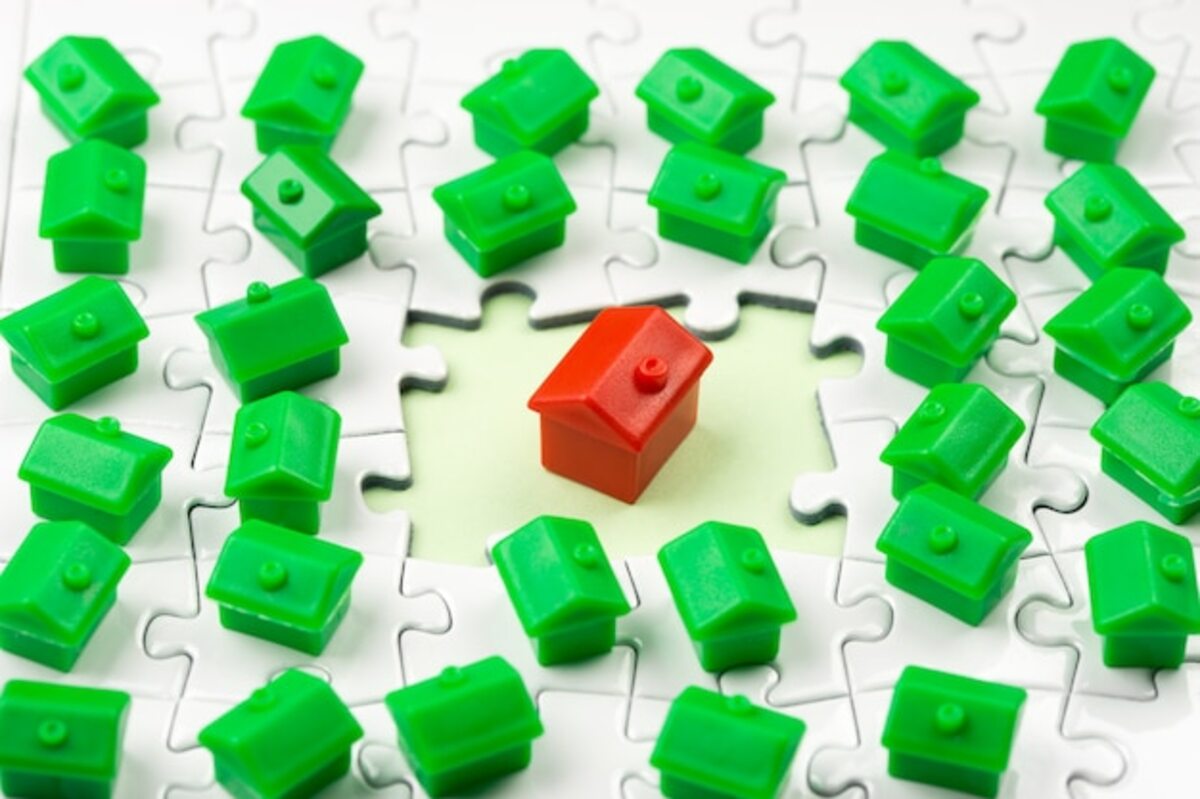The influence of the social environment on property valuation

The valuation of properties not only depends on their geographical location but also on the social environment that surrounds them. In Costa Rica, the contrast between rural and urban areas creates a unique mosaic of opportunities and challenges for buyers and investors. Understanding how these factors influence appreciation is essential for making informed decisions in the real estate market. Join me to explore how the social context affects property valuation and discover why your choice between rural and urban can make a difference in your investment.
The importance of the social environment in real estate valuation
The valuation of properties is intrinsically linked to the social environment that surrounds them, as the latter influences market perception and demand. An area with an active and cohesive community, where cultural, educational, and recreational activities are promoted, tends to be more valued by buyers. The quality of life that a neighborhood offers can make adjacent properties more attractive, which in turn generates an increase in their appreciation. For example, the presence of well-rated schools, parks, shopping centers, and nearby healthcare services not only enhances the daily experience of residents but also acts as a magnet for new families and investors.
On the other hand, the social environment can also present significant challenges for real estate valuation. Areas affected by issues such as high crime or lack of adequate infrastructure may see their properties lose value over time. Additionally, socioeconomic factors such as the educational level and average income of residents directly impact purchasing power and market expectations. Thus, understanding these social aspects is essential for anyone interested in investing in real estate; it not only helps identify promising opportunities but also allows for anticipating potential risks associated with the environment where the property is located.
2. Price comparison: rural properties vs urban properties
The price comparison between rural and urban properties in Costa Rica reveals significant disparities that are crucial for potential buyers and investors. Urban properties, located in metropolitan areas or growing cities, tend to have higher prices due to the constant demand for their proximity to essential services such as schools, hospitals, and shopping centers. The developed infrastructure and access to public transport also play a fundamental role in the valuation of these properties, making them an attractive option for those seeking comfort and convenience. On the other hand, rural properties offer more accessible prices, which can be a considerable advantage for those looking to escape the urban hustle or invest in land with development potential. However, it is important to consider that this market may be subject to fluctuations based on factors such as access to natural resources, the quality of life the area offers, and the growing interest in ecotourism. As more people value a more sustainable lifestyle connected to nature, rural properties could experience an increase in their valuation, making them an interesting option for those looking to diversify their real estate investment.
These aspects highlight how the social environment not only impacts the appeal of each type of property but also its long-term economic performance. While urban areas may offer immediate stability, rural areas present emerging opportunities that could benefit those willing to research and explore their possibilities. Ultimately, understanding these nuances not only contributes to informed decisions but also to fully leveraging financial potential in both urban and rural settings.
3. The impact of infrastructure in rural and urban areas
Infrastructure in rural and urban areas plays a crucial role in property valuation. In urban areas, access to basic services such as public transportation, hospitals, schools, and shopping centers can significantly increase the value of a property. Well-maintained streets and the availability of fast digital connections are also determining factors that attract buyers and investors. With these services within reach, urban properties become more desirable, which boosts their appreciation in a competitive market.
On the other hand, in rural areas, although the infrastructure may be less developed, its impact should not be underestimated. The arrival of new roads or the improvement of internet access can radically transform a rural community, making its properties much more attractive to those looking to escape the urban hustle without giving up modern conveniences. Additionally, initiatives such as the development of sustainable tourism or agricultural projects can add additional value to these areas, thus fostering balanced growth between rural and urban. The key lies in identifying how these infrastructures affect the social and economic environment, guiding strategic decisions for those who wish to invest in real estate.
4. Demographic trends: where is the population concentrated?
The concentration of the population in certain geographic areas is a determining factor in property valuation. In Costa Rica, there is a growing trend towards urbanization, where major cities like San José, Alajuela, and Heredia experience a constant increase in their population. This phenomenon not only raises the demand for housing but also generates a ripple effect that elevates the value of properties near workplaces, educational institutions, and healthcare facilities. Therefore, buyers and investors must pay attention to these demographic dynamics to identify valuable opportunities in the real estate market.
On the other hand, rural areas, although less populated, offer attractive features that can positively influence their valuation. The search for a quieter and more sustainable lifestyle has led many people to consider moving away from urban hustle. Thus, properties located in natural surroundings or communities with well-developed services may experience a significant increase in their value due to the interest from those looking to escape urban stress. Recognizing these demographic trends allows investors to diversify their options and adapt to the changing needs of the residential market.
5. The educational offer as a determining factor in added value.
The quality and availability of educational offerings in a specific area is a crucial factor that directly impacts the appreciation of properties. Families seek to settle in places where their children can access good schools, colleges, and universities, as this not only influences academic development but also the overall well-being of the household. When a community has recognized and quality educational institutions, it creates an additional appeal for potential buyers, which increases the demand for properties in that area and, consequently, their value. In this sense, proximity to educational centers can be a key differentiator when choosing between different housing options.
Additionally, the educational offer can also extend beyond the basics; extracurricular programs, cultural and sports activities available in the community are equally relevant. An environment that promotes continuous learning and the comprehensive development of young people tends to attract families that value these opportunities. Therefore, real estate developers and agents should consider this dimension when assessing valuation projections. The presence of a solid educational infrastructure not only ensures a promising future for new generations but also guarantees a sustained increase in property value over the long term.
6. Safety and quality of life: a comparative analysis
Safety is one of the most valued factors by buyers when choosing a property, and its importance varies significantly between urban and rural areas. In cities, where population density is often higher, crime issues can negatively impact the perception of safety. However, many urban areas have implemented effective measures to improve safety, such as police patrols and surveillance systems. On the other hand, rural communities often offer a quieter and safer environment, but they may also lack resources to address criminal situations. This contrast in safety directly affects property values: those seeking tranquility and low risk tend to prefer the rural environment, while others opt for urban areas due to their advantages in infrastructure and services.
Quality of life is another fundamental aspect that affects property valuation. Urban areas offer a wide range of services such as education, health, and entertainment that can attract young families and professionals. However, this development can come with traffic congestion and a fast-paced lifestyle that not everyone appreciates. In contrast, rural areas often provide a more relaxed lifestyle, with access to nature and open spaces, which is highly valued by those looking to escape the urban hustle. This search for balance between quality of life and urban convenience translates into decisions about where to invest: while some prioritize proximity to workplaces or schools in urban settings, others may choose to invest in the countryside, seeking a home that offers them peace of mind and personal well-being.
7. Future perspectives: where are investments heading?
Future prospects in the real estate sector of Costa Rica are deeply tied to the evolution of the social environment. As demographic dynamics change, with an increasing flow of people to urban areas and a search for quality of life in rural zones, investors must pay attention to these trends. Communities that foster social cohesion, access to basic services, and environmental sustainability will position themselves as attractive to those seeking not only a property but also a lifestyle. Therefore, investments in developments that integrate these characteristics are likely to see an increase in their valuation.
Moreover, technology plays a crucial role in the future of the real estate market. Digitalization has improved the experience of buyers and investors by providing accurate information about properties and their social environments. Tools such as online platforms to assess neighborhoods or applications that measure air quality and other environmental indicators will become increasingly relevant. Investors who adopt these innovations will be better prepared to identify emerging opportunities within the market, especially in areas where urban and rural development intertwine, creating new spaces for appreciation and economic growth.



